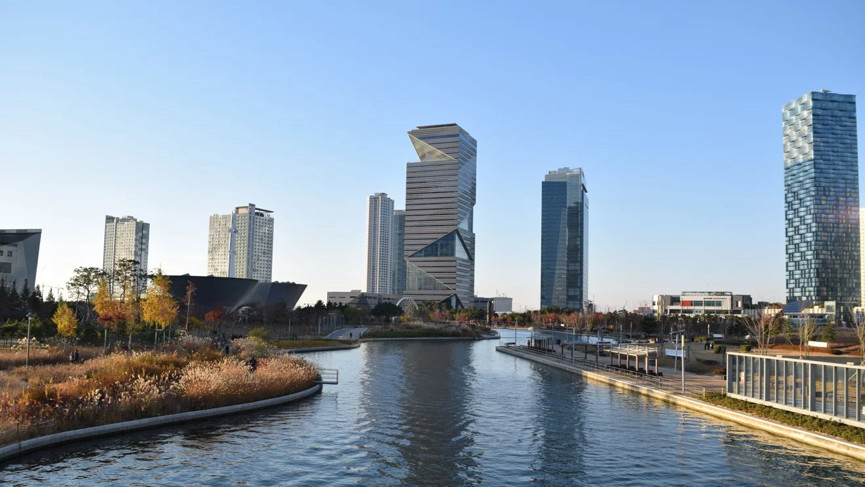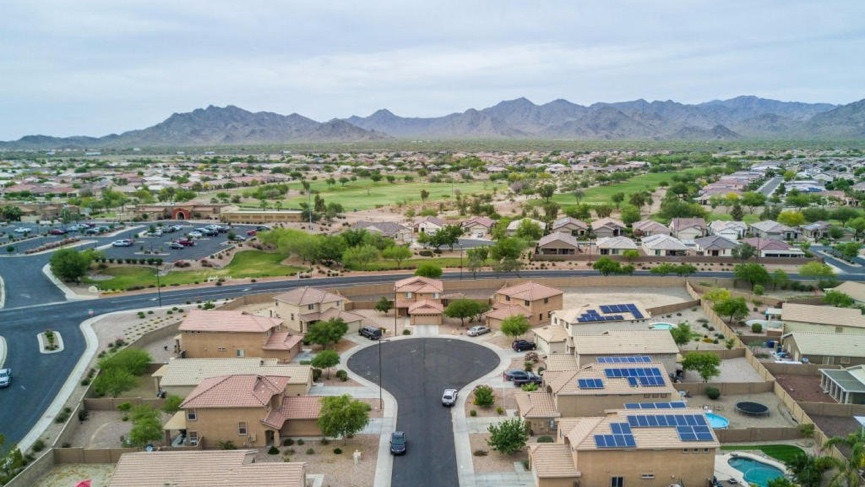The ambient home needs an ambient city to live in
The smart city has been hot for years, but often tech companies, developers and city planners are all talk and no action. When we’re thinking about how technology will become more ambient, embedded into our lives, all around us, though, the smart city is set to play a big part.
So we decided to take a look at a few visions for how this will play out – from practical schemes like bringing smart parking to cities to bigger projects like turning a whole waterfront area into a smart neighbourhood, as well as which of the high profile, headline-grabbing smart cities from scratch are actually getting off the ground and succeeding.
Read this: Weird and wonderful smart home ideas
We also wanted to do some globetrotting, so we’ve chosen projects and cities around the world – this isn’t just an American and European concern. The first, successful, iconic smart city might pop up in the Middle East or Africa.

Smart parking in Hamburg
Now: Smart parking is one of the most accessible and practical smart city ideas for 2018 because it’s so simple. In January this year, Deutsche Telekom began installing sensors on parking spaces in the city’s downtown Wandsbek district. The trial began small, with 100 connected parking sensors that can show people where they are likely to find free spaces via the Parking Space feature of the Park and Joy smartphone app. The app has let users pay for their parking since autumn 2017.
Right now the parking predictions are based on data from ticket machines, network usage and the weather. The data from the parking sensors will be fed into the Park and Joy system “before the end of this summer” to make it much more accurate. The aim is to reduce both car emissions and city traffic – Oliver Bahns, head of Connected Mobility at
Next: In a city, 100 sensors isn’t going to make much of a difference, but Deutsche Telekom plans to install up to 11,000 parking sensors in both public spaces and parking garages in downtown Hamburg between now and the end of 2019, all communicating via the narrowband radio frequency. The wider aim is to roll the Park and Joy parking space locator to other cities across Germany and DT is talking to cities including Bonn, Darmstadt, Dortmund, Duisburg, Hagen and Moers. Similar smart parking schemes are being carried out in Westminster, London (UK), and Adelaide, Australia where the aim is to install 2,800 parking sensors by this summer.

Alphabet’s Quayside waterfront in Toronto
Now: Alphabet’s Sidewalk Labs announced in January 2018 that it was building a 12-acre smart neighbourhood called Quayside on Toronto’s waterfront, marking the Google parent company’s move into urban development. It won a public Request for Proposal in autumn 2017 with a 196 page document – which you can read – outlining tech and data heavy ideas like a sustainable thermal grid; autonomous public transport; modular prefab buildings, robotic delivery and waste management and a “digital layer” across the whole smart city area. Smart neighbourhoods are a trend we can see taking off in big cities as tech companies start to compete with traditional developers.
Next: It’s really happening. And by that we mean people are already unhappy about it. Sidewalk Labs plans to begin testing its smart city technologies this summer, get a development plan approved by the end of 2018 and start building it in 2020. Sidewalk Labs CEO Dan Doctoroff has said that the first residents may be able to move in as soon as 2022. And it’s not stopping there, Doctoroff told Reuters in April: ““Quayside will be a prototype for a broader opportunity.” Meanwhile, city officials and residents have been voicing concerns over the sealed deal around the Quayside development.

Songdo, South Korea
Now: Perhaps a lesson in what to avoid when building a smart city from scratch, Songdo – which is two hours by public transport from Seoul, South Korea – is being described in 2018 as both not smart enough and “a ghost town”. Costing an estimated $40 billion and originally designed for around 300,000 residents, only 70,000 live in the part completed Songdo – the completion date has been pushed back from 2015 to 2018 and now to 2022.
There are still plenty of futuristic elements though, including rubbish being pneumatically “sucked” out of houses and then recycled, which generates electricity. But there are no cultural spaces and only 50 brands have gambled on the city. And the main problem? The very high cost of living.
Next: The next phase of Songdo’s development will focus on American Town which will consist of towers of luxury apartments with futuristic smart home tech, as well as US-style education. The idea is to entice Koreans living in the US back to their home country, as well as other foreigners. Roll on 2022…

Akon Crypto City
Now: Fans of Black Panther’s afro-futurism will have heard of rapper Akon’s recent bold claims that he plans to build a futuristic Wakanda style smart city near Dakar in Senegal. He wants to build a new city on 2,000 acres of land allocated for the project by Senegal’s president and powered by his cryptocurrency Akoin.
Next: The Akoin website states that it is “already in development”, that it’s five minutes from the new international airport and “blends leading Smart City planning designs with a blank canvas for cryptonizing our daily human and business exchanges, with the goal of inventing a radical new way of existence.” Akon hasn’t set a completion date yet.
Now, it all sounds wacky and like one big advert for his crypto coin but Akon, who is Senegalese, already has form in tech and infrastructure projects in Africa. Akon Lighting Africa – he likes to keep it simple with his names – was founded in 2014 and now provides solar energy to two million households across 18 countries.

Bill Gates’ smart city in Arizona
Now: A smart city could well become the new status symbol for multi-millionaires and billionaires. In November 2017, Bill Gates announced that he (okay, his investment group Cascade Investment) was putting $80 million into developing a 24,800-acre smart city outside of Phoenix, Arizona.
The ambition laid out was for 80,000 residential units with 470 acres allocated for public schools and 3,800 acres for offices, businesses and shops. The ‘smart’ bit consists of high-speed public Wi-Fi, driverless cars and “autonomous logistics hubs” whatever they are.
Next: Since the initial announcement, we’ve heard nothing publicly about the progress of this new smart city in the desert. Still, these things take time – no doubt Gates and co are looking for developers.





